A year ago ‘Mr. Curbstone Valley’ had a bright idea, and suggested that I should start a blog. My response was ‘why, what on earth do I have to say that anyone would want to read?‘ Then I realized that it didn’t really matter if anyone wanted to read it. I did wonder though if we’d have enough to blog about, and I expected we’d run out of material after a few posts. More than a hundred posts later, I’ve realized I was wrong.
We knew when we bought this property that we had our work cut out for the two of us. We’ve had gardens before, but this was an order of magnitude different from anything we’d maintained previously. Even with small gardens though, as things take shape, and plants fill in, it becomes difficult to remember how things looked at the beginning. So I agreed to try, at least for while, to start documenting our efforts (and discoveries) here.
We knew when we bought Curbstone Valley that we had trees…lots…and lots…and lots of trees.
This is in part why we bought the property. I remember as a child spending hours walking through woodlands, along the canal banks, and through pastures, and it’s always where I feel at home, outdoors, surrounded by nature. When we moved here, we simply thought we were moving to the woods.
We love to garden, but what ‘style’ of gardening would be appropriate here, and more importantly, what would grow? Over the years we had experience gardening both in dense shade, and in full sun, and both could be found here. Our last garden also provided us with plenty of hardscaping experience too.
However, we sat dazed for most of the first two years here, mostly feeling overwhelmed, watching as small herds of deer grazed on almost everything in sight. Then we wondered COULD we grow anything here? Deer, gophers, rabbits, voles, slopes, drainage issues, dead trees everywhere. It was difficult figuring out where to start.
We also have the challenge, living in the Santa Cruz Mountains, of elevation changes on the property. There are few places here that are perfectly flat, and we run the gamut from level ground to sheer slopes. The lowest points on the property are approximately 460 feet above sea level, the highest point, is 720. That’s an elevation change of 260 feet, within seven and half acres!
We had to start somewhere, so we began by identifying where we’d like to plant an orchard and garden. We cleaned up some very neglected areas of the property. We beat back the poison oak, and cleared dead trees, and invasive brush.
We envisioned an orchard here…but we’re sure everyone thought we were crazy. They might still be right!
However, an overhead view of the area after we were done clearing this slope did show we were making progress.
Just as we were getting going, our El Niño winter arrived early with a record-breaking storm, courtesy of the remnants of typhoon Melor slamming into the California coast. We tried to be prepared, but Nature will always throw you a few curves.
We were side-tracked for weeks clearing fallen trees and branches.
After drying out for a while we spent months installing, and perfecting our perimeter deer fence, much to the entertainment of the deer.
Then in November, Curbstone Valley Farm became a Certified Wildlife Habitat.
During the winter months, while driving in fence stakes, and installing orchard irrigation lines, we discovered a whole world of fabulous fungi growing around the property, and even a fascinating slime mold, and so Curbstone Valley’s ‘Mushroom Mondays’ were spawned.
By spring, as the fungi and the rains receded, we thought the deer fence was finished, but were proven wrong, on numerous occasions, as our daring dastardly deer succeeded in jumping over, and pushing under the fence, repeatedly…and even breaking clean through it. Our deer population also grew significantly this spring.
In spring as the daffodils emerged, we finally planted out the orchard. We haven’t allowed the trees to set fruit this year while they establish their roots, except for a few peaches on the Frost peach that we acquired last year.
Believe it or not we pulled 68 peaches off our immature tree before the fruits were an inch in diameter, and still ended up with these, which were almost enough to pull the tree over (that’s how small the tree is).
We can’t wait to see what this tree can do once it’s established!
Our blueberries also set fruit this year, but the deer had most of those.
We discovered throughout the spring numerous native plants and flowers that were growing on the property that we weren’t previously aware of.
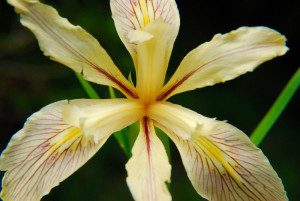
After finding so many native species here, we realized we don’t have to plant as much. Just encourage those species that are already here
Then as we were just starting to work on the vegetable growing areas, we decided to add more chickens to the farm. Thus Curbstone Valley ‘Fowl Fridays’ were born.
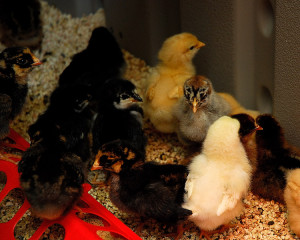
Our chicks arrived March 29th
Lest we shouldn’t have enough going on, it didn’t stop there. Then we added turkeys!
This resulted in more construction projects in the form of poultry pens, and arks, and some delays in getting the garden going. Did I mention there’s only two of us?
We eventually turned our attention back toward the garden. This is where I wish I’d taken more ‘before’ photographs. However, this will give you an idea of where we started…although somehow the picture doesn’t do it justice.
This at least is progress!
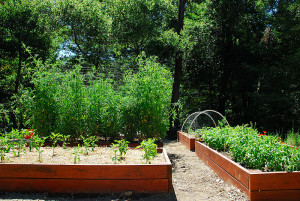
Same southwestern corner of the garden as above, note the Madrone trunk behind the rear right raised bed
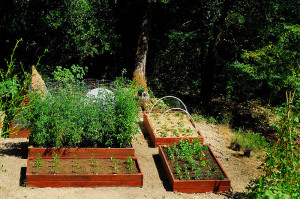
Providing the fence holds, this is the view the deer will have from now on from the slope above the garden
We’ve grown a number of greens in this part of the garden this year.
Our tomatoes are so much happier so far this year than last, well, except for some persistent mid-summer fog and cool temperatures, that are slowing their ripening this year.
The peppers should perk up once the weather warms…if the weather warms.
Our basil though doesn’t seem to mind the chill and the damp too much.
The rosemary seems quite happy too.
On the upside, our cool summer weather though has enabled us to continuously produce wonderful heads of lettuce all season so far.
The red-veined Sorrel is appreciating the cooler summer weather too.
We’re steadily making progress, but many more projects await us. First, we have coop number THREE to build, to house our now homeless rooster. We still have a lot more to do in the vegetable garden area, including building a retaining wall, and constructing a hybrid shed-greenhouse, before we can add more raised beds to the gardens. Once the remaining raised beds are installed we can finally lay out our permanent drip irrigation lines in the vegetable garden. We’re also planning to seed many more native annuals and perennials in the orchard and gardens when the rains return this autumn.
I hate to admit it, but we’ve really only just started. I wonder what the next hundred posts will bring?

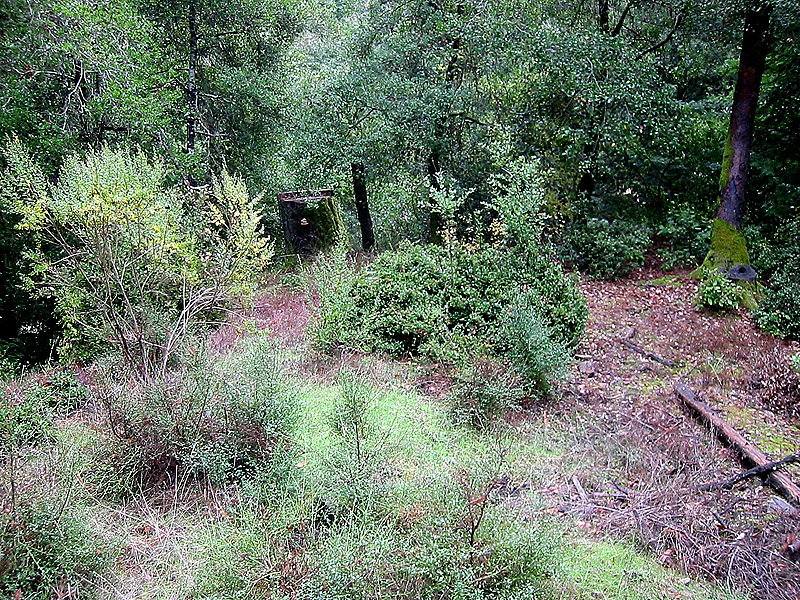
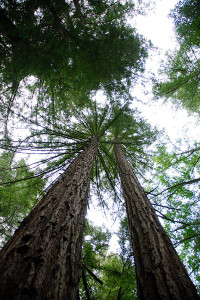
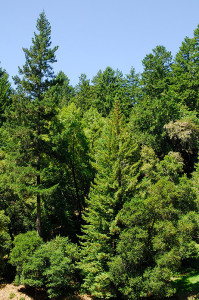
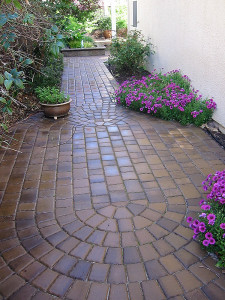
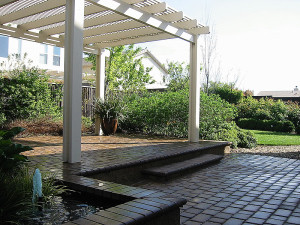

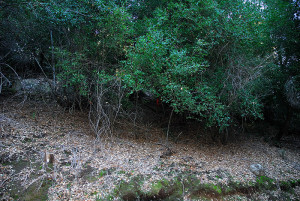

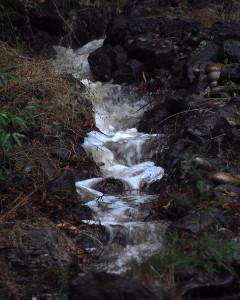
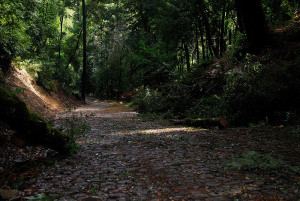
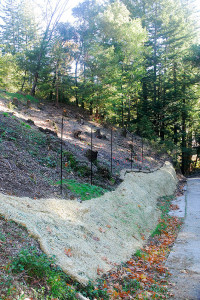
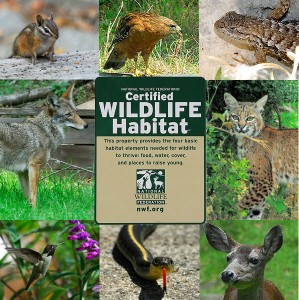
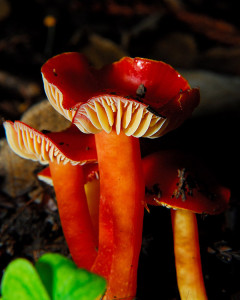
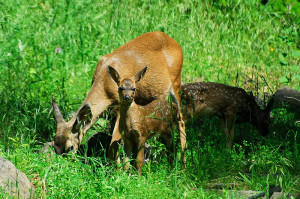
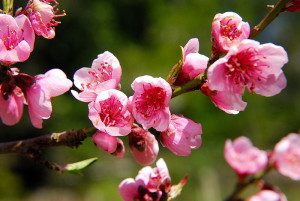
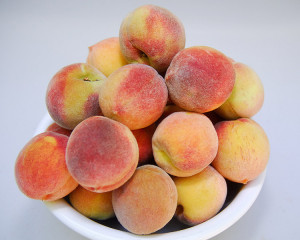
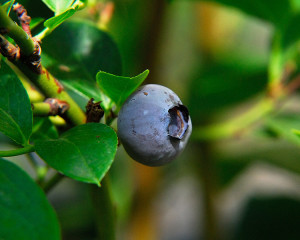
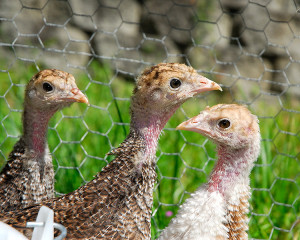
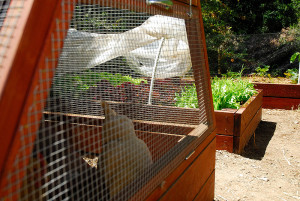
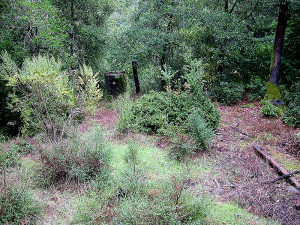
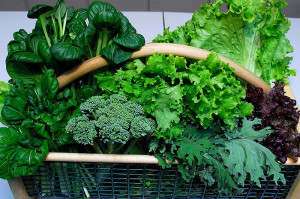
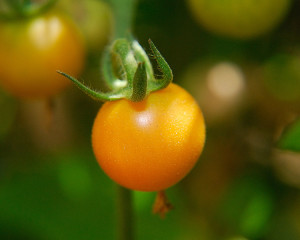
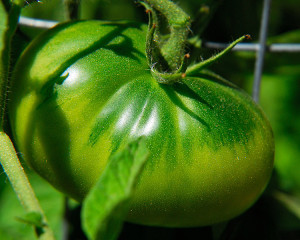

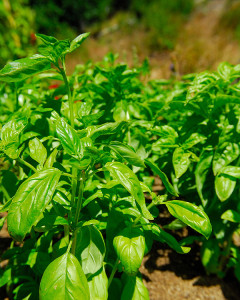
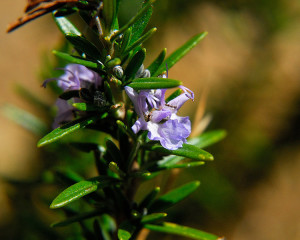

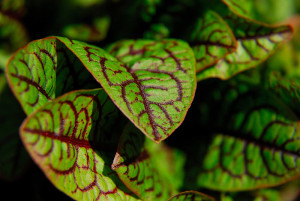







Curbstone, I’ve enjoyed every minute and look forward to the next 100 posts.
Happy Anniversary! I’ve thoroughly enjoyed reading what you have to say and the drooling over the gorgeous photos you take.
Champagne & congratulations Clare, you have put together a class-A blog!I have enjoyed every delicious, funny, interesting and informative post, picture & video! Thank you too Jon, for I am sure your contributions are critical, you know, with the earth moving and all! Well done!!!
Congratulations on a wonderful year of blogging. Your writing and photography and insights are such a delight.
I am so glad you started a blog. I look forward to your posts and it’s definitely one of my very favorite blogs to read. I’m glad to have “met” you through blogging too. Your farm has given me lots of inspiration for our dream of one day having some land to have our own little farm.
Happy 1st blogiversary!
Congratulations Clare – its been a pleasure reading over here about all the critters, interesting native plants and all your challenges in the farm along with your lovely photography.
The first post I ever read on your blog was a Mushroom Monday post. And now I always look forward to Fridays and dear little Frodo.
Look forward to another year of posts. 🙂 Rosie
Hi CV,
I love to see garden progressing, it always amazes me how differently something can look in the space of a few months. I was looking at some of my photos from April last night and couldn’t believe how much things have grown – although not on your scale at all with the sheer amount of work you’ve undertaken.
I look forward to more updates and especially to hear whether you manage to beat those pesky Deer! They’re certainly stunning animals, it’s just a shame they cause so much damage.
Happy Blog Anniversary Clare! You have marked the occasion with a fabulous post! Brava! I so enjoyed it all! Those “dastardly daring deer” are darling too, though I know what damage can come from those cute faces. Mine here do not eat my blueberries (native) and mostly leave me alone … watch out for rabbits! It is so impressive to see what you have accomplished. Beautiful photos throughout this excellent post! I look forward to the next one hundred!! ;>)
Wow, so many changes! I certainly can appreciate the labor you’ve put in, as I have struggled on my son’s six acres of wildness this past year. Your property is so beautiful. Love those towering redwoods! I roamed the outdoors also as a child and really miss it, as I’ve lived in subdivisions my whole adult life. You are so lucky to be able to roam your land every day. I must say I love the cobblestone work you did at your previous home. Gorgeous! Oh, how I’d love something like that here!
Happy Blogaversary! Has it only been a year? Seems like I’ve been trembling for Frodo, fretting about the deer, and cheering on the native plants for much longer. Thanks so much, I’ve very much enjoyed your blog. BTW, what’s going on with the turkeys?
Thanks Mr. Curbstone Valley for encouraging Clare to share her wonderful images and stories. So many things I love about your posts that words become superfluous… except a very happy 100th 🙂
Laura x
Happy 100th blog post – and what a blog. Thoroughly enjoying it – pictures are great too. Looking forward to more….
Happy Blogaversary! I especially enjoy discovering your wild flowers with you.
Happy Anniversary. With all the work you’ve done it’s amazing you have time to write, but glad you find the time. I really enjoy reading your blog.
What a wonderful journey- you guys seriously rock! I just love coming by and living vicariously through your adventures. Isn’t blogging oddly addictive? I had no idea!
You forgot to mention when you 2 ever find time to SLEEP!
Your farm really is wonderful. Thanks for sharing.
Truly in awe reading this post … you are amazing, Clare, and a true delight to visit … love your posts, love your photos. I can see why no challenge is too daunting … you have an insightful gift and Mr. Curbstone beside you. Happy Blog-iversary 🙂
Congratulations Clare~You’ve had a remarkable year of blogging and creating the life you want. Thanks for sharing your wonderful sense of humor and great photos~gail
Happy Blogiversary. What an amazing property you have, and you’ve done so much with it. Truly awesome.
Clare, Happy, Happy Blogaversary!!!!
You two have accomplished so much, I cannot believe how hard you have been working. I certainly cannot complain about my little garden anymore, lol.
Hope to read many more wonderful posts about your ‘lifes work’.
Happy blogiversary, Clare! I really enjoyed this post of progress. LOVE the aerials…really does show your progress. I’m thrilled about your wildlife habitat also…it’s really important to live in harmony with those that lived here first. GREAT photos!!
I’m glad the Mr. steered you towards a blog, for I really enjoy reading it and seeing what all you are doing at CV. Of course I always enjoy Fowl Fridays too!
A fantastic look back! Yes, the journey of 1,000 miles began with but a step – but hey it’s what we love to do, no? :~) Great job so far, I really admire your stewardship and attention to detail. I really enjoy your blog! Thanks for stopping by mine – the rutabaga has been a wonderful crop. After blanching or roasting, thick slices of rutabaga freeze very well and are so much more flavorful than potatoes. Lovely in a casserole. Virtually pest-free crop, to boot. We have a big long row of them and they are doing well. I do recommend rutabaga, in full sun or it could get mildewy on the leaves. Thank you for asking! Cheers, Bonnie PS: Kisses for Frodo
Clare,
I am amazed at what you have accomplished in one year! I will never complain again about weeding my “little farm” as I call it.
You always write the most interesting journals and I am so glad that I came across your blog. Happy anniversary!
Clare, Please thank Mr. CV for me! I can’t imagine having missed all those mushrooms or the saga of Frodo. What I’m wondering, though, is how you have time to do all you’ve done and blog too. Have you given up sleeping?
Well don’t keep us in suspense. Hurry up with the next 100 🙂
I’m sure you already know a day can’t go by without finding something natural to write home about. The problem is finding the time to post when you’re out standing in your field.
Congratulations on a year of blogging! And congratulations on all the work you have done. Your place is looking great. I’m glad to see some of the overviews. You do have so many wonderful trees. Years from now you will walk your land, and it will be such a blessing, full of memories and rewarding you with an abundant harvest for all your labor.
Congratulations!!! It’s been amazing to watch your journey, Clare. You’ve made amazing progress (that aerial photo was great for illustrating the change) and I’ve enjoyed both the Mushroom Mondays and Fowl Fridays series. I am sure you will continue to surprise and delight us with the development of your property. As always, I find it so heartening that you are doing this in a way that supports the local ecosystem *and* yourselves.
Happy 1st year bloggaversary. 🙂
Congrats on the first year!
I had the same feeling, ‘Who would want to read what I write?’ lol. I’m so glad I got into blogging though. And I’m glad you got into blogging, because I enjoy reading your posts so much!
My favourites are about the mushrooms and about the chickens. It’s like ‘Days of Our Coops’ lol
I love your blog and enjoy reading about your projects and animal encounters. I’m a big fan. It looks like you have lots of fans too so you must keep it up! Congratulations on your first year!
Hello Clare, I hope I’m not too late for the party and to wish you a ‘Happy Blogaversary’!
It is just amazing to see your garden /farm in review like that…soooo much hard work! Thank you for sharing it all with us and I can’t wait for the next twelve months worth of instalments!
What an amazing accomplishment. Beautiful story. Can’t wait to see the aerial of your orchard in bloom next year. Good luck with the deer!
Happy blogoversary! Yours is one of my favorite blogs, and I’m not just saying that because you’re celebrating a year of blogging. I’ve learned quite a lot from your blog since I discovered it. Thank you. And keep blogging.
Congratulations one 100!! I haven’t gotten a chance to read all 100 since I am only 3 weeks into blogging, but I sure have enjoyed the ones I have read. I look forward to your next 100,200, 300…